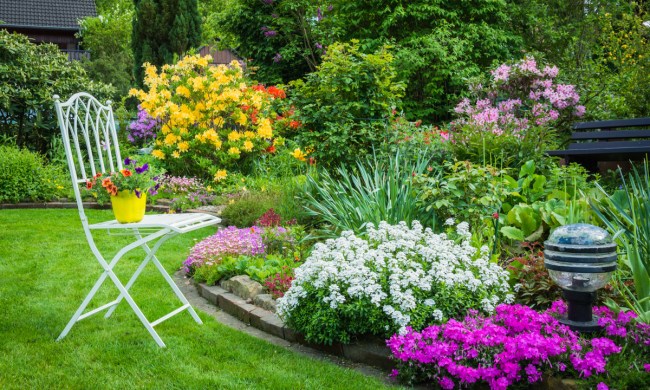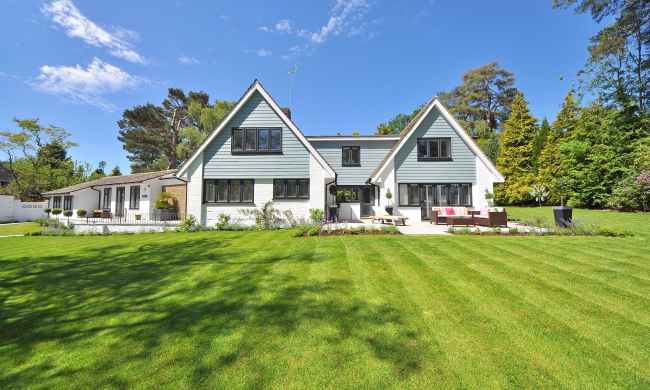Whether you’re planning to sell your home, rent it out, or get an appraisal for refinancing, curb appeal matters. Of course, making cosmetic upgrades can be time-consuming, expensive, and challenging for DIYers.
Fortunately, there’s a lower-cost way to increase curb appeal immediately: adding low-maintenance plants. In fact, landscape-related curb appeal can mean up to a 12.7 percent price advantage if you’re selling your property. Even if you’re not selling, the perceived value of your home could skyrocket.
Choosing plants that don’t need much care can add a pop of green (or another color) to your home’s entryway. And since you can plant them and practically forget about them, they’re appealing over the long-term, too.
How to Identify Low-Maintenance Plants
In general, you can think of low-maintenance plants as ones that take care of themselves. Apart from a bit of watering, they don’t need much to survive (or thrive). Lower-maintenance plants often have characteristics such as:
- Natural resistance to common plant diseases and garden pests
- Regular—and not aggressive—growth patterns without the need for trellises or stakes
- Low water needs, in general
- Drought resistance that’s suitable for your area
- Hardiness to survive frost, as applicable, in colder months
- Longer blooming periods—and a tendency to look nice even when out of season
- Attractive to pollinators like butterflies and bees (self-propagating)
- No need for trimming or deadheading
Another way to identify low-maintenance plants is by searching for your zip code on the USDA hardiness zone website. You can find out what zone you live in and then choose plants that can thrive in that environment.
Take care to avoid invasive species that aren’t native to your area. Choosing native plants increases the odds that they’ll thrive in your local environment. Plus, native varieties reduce the need for pesticides and fertilizer. The less effort you need to make to keep the landscape alive, the easier it will be to preserve curb appeal long after planting season.
Choose Agave for Excellent Curb Appeal in Harsh Climates
Agave is native to the Americas, and you can find it thriving in desert environments throughout Mexico. But the perks of adding this monocot to your curb go beyond its ability to skip weekly watering.
Agave comes in many colors, though the flowers bloom rarely. Depending on the variety, your agave may grow up to six feet tall—or as little as a foot or so. Choose the size that’s right for your landscape, then sit back and watch it grow.
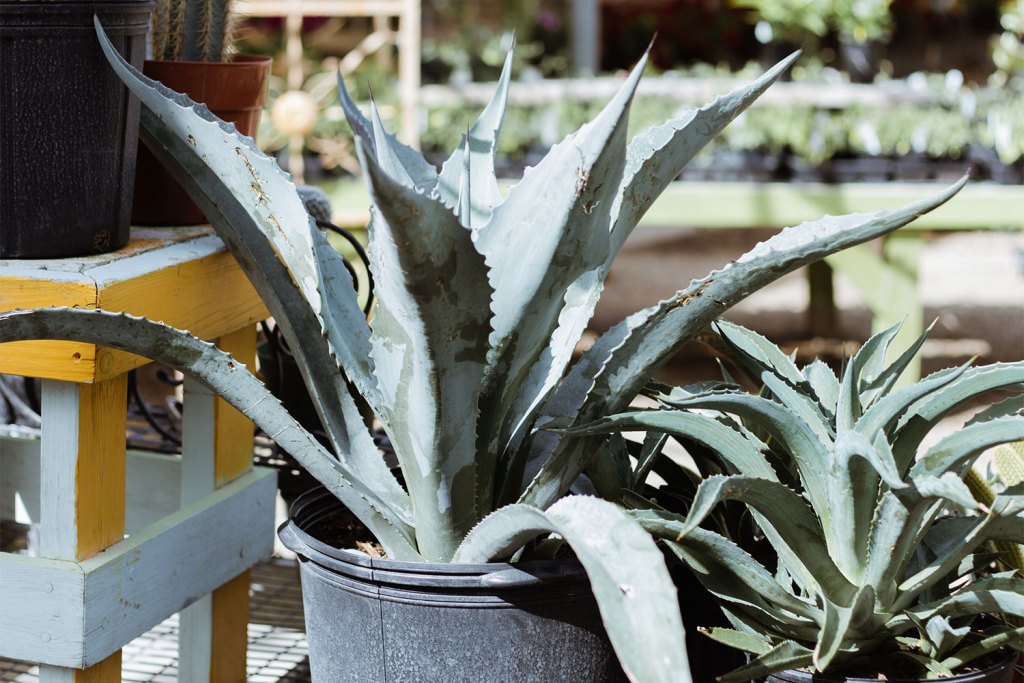
Regardless of the type, you can plant cuttings (growing from seed takes years) in rough soil that’s sandy or rocky. With good soil drainage, agave can even survive harsh winters. A bit of watering is necessary at the start, but then agave will thrive with only a small offering of moisture.
There are also many varieties of this popular ornamental plant to choose from to complement your home’s design, including attenuate, tequilana azul, Victoria-reginae, and parviflora. Plus, since agave plants have shallow roots, you can plop them in a container of almost any size for near-instant curb appeal.
Select a Yucca for Effortless Year-Round Curb Appeal
Yucca plants are another excellent option for stress-free curb appeal. Plant it and forget it, and never worry about droughts: the yucca only requires watering in severe conditions (such as months without rain).
Over 50 varieties of yucca are available, and they live on every continent except Antarctica. In short, the plants are hardy and vibrant with very little care. They also grow slowly, enjoy full sun, and are resistant to pests and common plant diseases.
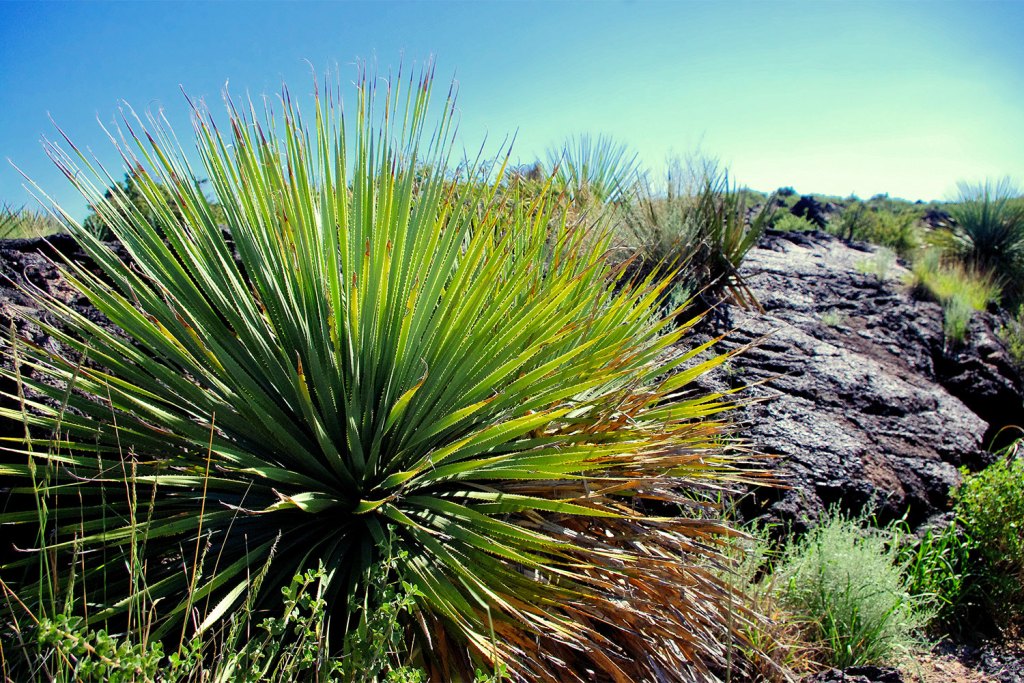
Red yucca (also known as hummingbird yucca or hesperaloe parviflora) is a favorite among succulent lovers for its pop of color. While green is always better than lifeless brown or yellow, a pop of color is also ideal for enhancing curb appeal.
Along with tips like setting out a colorful patio set or repainting your front door, home improvement experts also suggest improvements like potted plants in a range of hues. Colors that contrast with the dark color of your mulch (or the color of your home’s exterior paint) can also catch the eye of passersby.
Grab Coneflowers for Colorful Curb Appeal (and Friendly Pollinators)
Coneflower—AKA echinacea—thrives on the eastern coast of the US, but it can handle rough environments all across the country. Almanac notes that coneflowers like full sun, can survive drought, and continue blooming throughout multiple seasons.
The coneflower isn’t picky about its soil conditions, and it doesn’t mind being ignored, either. Of course, it does attract pollinators, but that’s a good thing. You can expect to enjoy colorful butterflies and buzzing bees depending on the season.
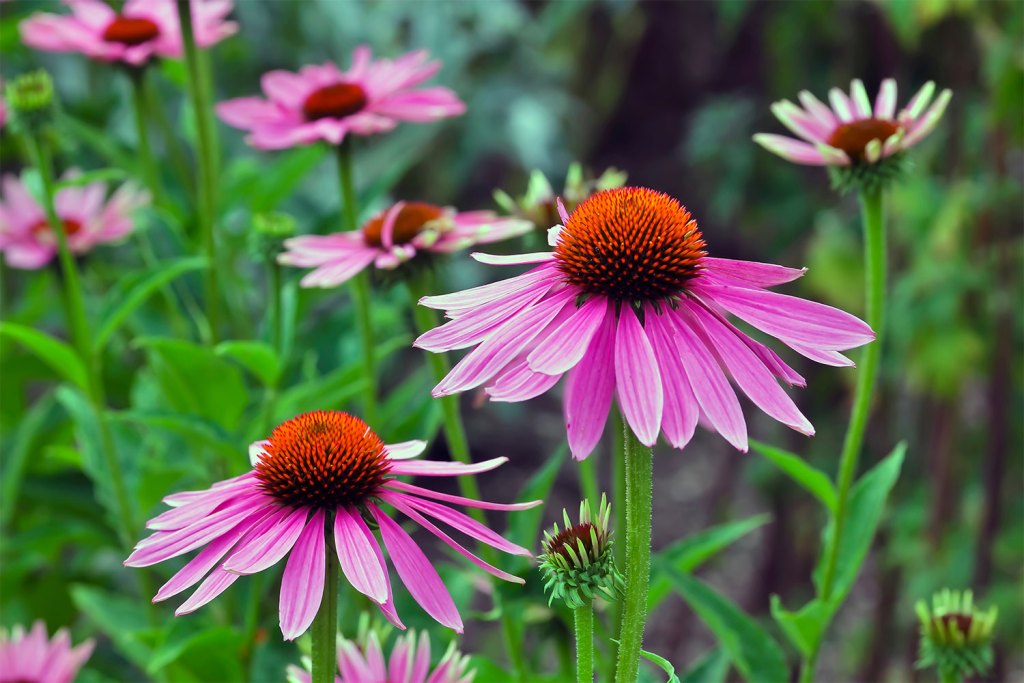
A bit of a trim can help this plant stay pretty all year, and that’s all the care it requires. Choose from the echinacea purpurea, which is purple, or a range of other colors and grab store-bought blooms for a faster update to your landscaping.
For colorful curb appeal and the added benefit of regular butterfly visits, you can’t go wrong with coneflower. And for potential buyers who prefer flowers to shrubs, these blooms are sure to please.
Cover Dead Spots and Enhance Curb Appeal with Creeping Sedum
If you have bare spots that are making your lawn an eyesore, fill in the gaps with creeping sedum. Creeping sedum—also known as stonecrop—can live in arid conditions of all kinds.
Plenty of colors are available, and there are over 400 species of sedum to choose from. If your soil is dry, rocky, or otherwise unfavorable for other plants, sedum can probably survive. It will spread on its own quite well, but with shallow roots, you can remove it easily if you change your mind.
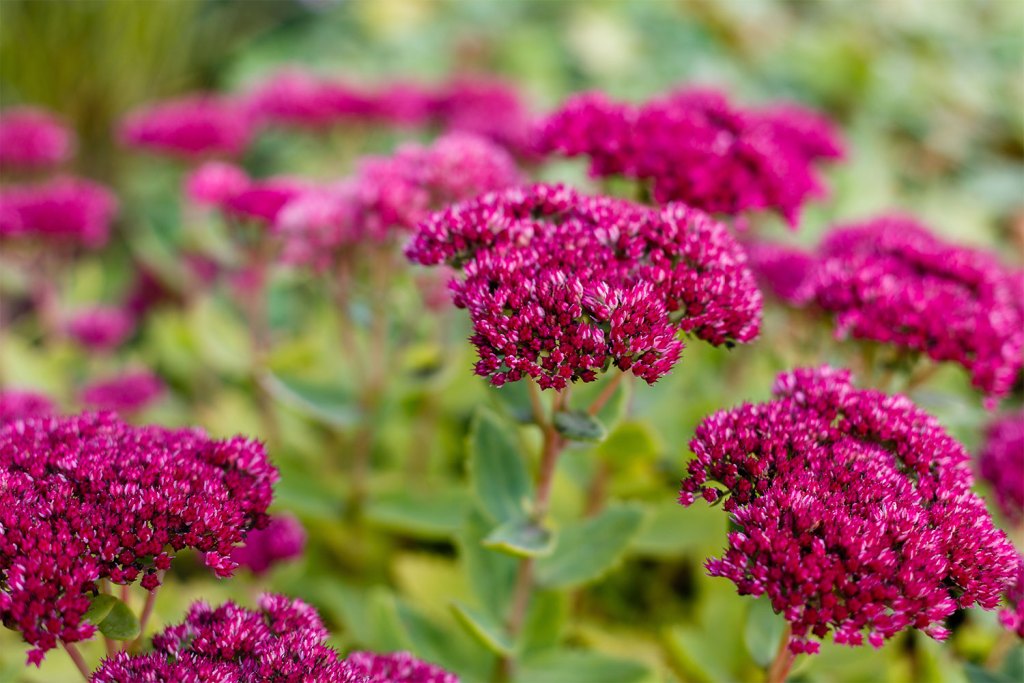
Of course, the best part is that you won’t need to water or care for this plant at all. Sedum isn’t susceptible to many diseases or pests, and they enjoy full sun with no need for shade.
Since sedum “creeps” as it grows, it can fill in otherwise unsightly bare spots on its own. This is a helpful way to enhance curb appeal via your lawn without spending hours laying expensive and time-consuming sod.
Get Marigolds for Cheerful Blooms That Make Your Yard Inviting
Marigolds are the ideal flower for homeowners who can’t bear to settle for grasses or succulents. At the same time, marigolds are hardy and can thrive with very little care. They even repel pests like mosquitoes, which is an excellent highlight for anyone hoping to spend time outdoors enjoying the landscape.
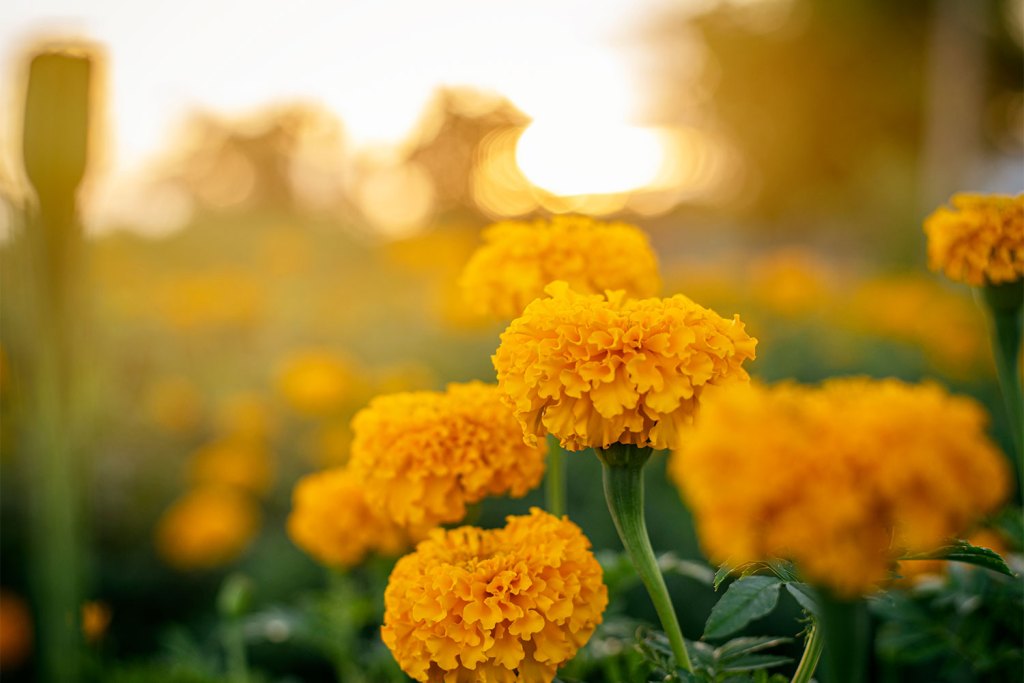
You can grow marigolds from seeds or purchase seedlings, and even with purposeful neglect, most will survive. Honeybees enjoy visiting marigolds, but many pests—such as roundworms and even deer—prefer to stay away. These flowers are also edible for humans, making them a great addition to vegetable gardens, too.
If you want to increase curb appeal by planting a bedfull of flowers, marigolds are an easy choice. Full sun and a little bit of water help the blooms thrive, and a little neglect won’t kill them off, either. Their cheery demeanor can also make your home feel more inviting, which is the primary goal of your curb appeal efforts.
How to Improve Curb Appeal with Low-Maintenance Plants
While it’s easy to increase curb appeal with low-maintenance plants, there are some tips and tricks you need to know to make the most of your efforts.
First, it’s essential to keep addressing curb appeal over time. Especially if you’re selling your home, keeping up with raking leaves, cleaning the driveway, and washing the windows can go a long way toward enticing buyers.
Fortunately, after planting your low-maintenance greenery, there’s not much to do in the way of caring for the plants. But to maximize the payoff of your efforts, consider the following points.
- Planting any low-maintenance plant in a pot or movable planter box can mean more flexibility for placement. You can move plants near the front door to prepare for a showing. Or, line a walkway to add interest to the entryway.
- Choosing plants that remain colorful all year—instead of blooming once—can help your landscaping look fresh. If you want a just-tended look when listing your home for sale, succulents and ground cover might be preferable.
- Cleanup can go a long way. After you’ve added low-maintenance plants to boost curb appeal, focus on power washing the driveway, sweeping the sidewalk, and replacing your front door mat to create the illusion of a pristine home.
Statistics show that flower beds and borders are the top factors in a home’s curb appeal—followed closely by shrubs, perennials, and trees. So, while updating your outdoor lighting and mowing the lawn are helpful, the easiest way to add curb appeal is by focusing on plants that add visual value.
With these low-maintenance plants, you don’t have to spend hours watering, fighting back against pests, trimming greenery, or fertilizing. That means more time to spend on other aspects of curb appeal—plus enjoying your home and the increased ambiance it offers.

